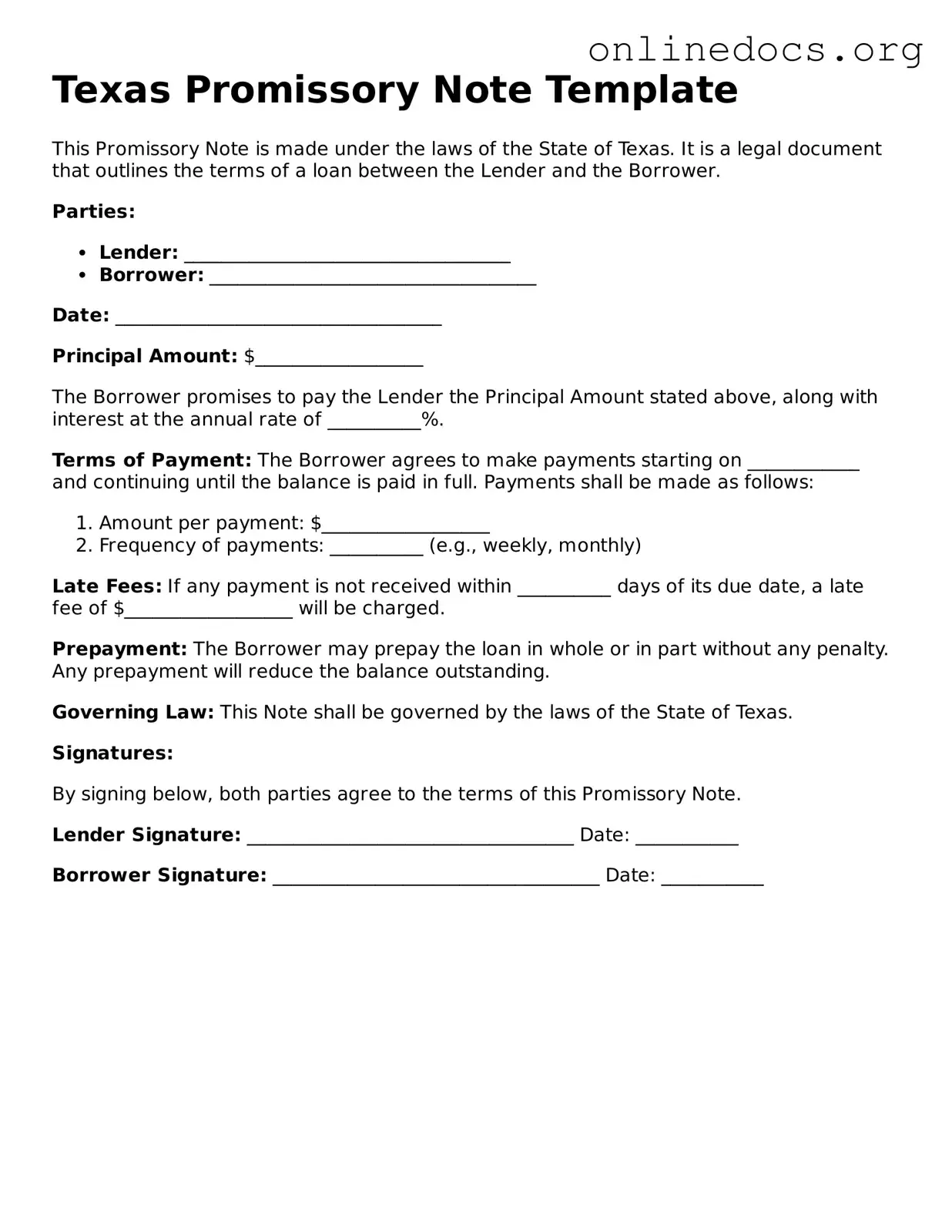The Texas Promissory Note form shares similarities with a Loan Agreement. Both documents outline the terms of borrowing money, including the amount borrowed, interest rate, and repayment schedule. A Loan Agreement, however, often includes additional provisions such as collateral requirements and conditions for default. While a Promissory Note is primarily a promise to pay back the borrowed amount, a Loan Agreement provides a more comprehensive framework for the lender and borrower, detailing the rights and obligations of both parties.
Another document that resembles the Texas Promissory Note is the Secured Promissory Note. Like the standard Promissory Note, it serves as a written promise to repay a loan. The key difference lies in the inclusion of collateral in the Secured Promissory Note, which provides the lender with a claim to specific assets if the borrower defaults. This added security can make lenders more willing to extend credit, as they have a tangible asset to pursue in case of non-payment.
The importance of understanding legal documents, especially those related to financial matters, cannot be overstated. For instance, if you're considering managing someone's financial or legal affairs, a vital resource is the California Power of Attorney form, which enables one individual to make decisions for another when they cannot do so themselves. Learn more about this document by visiting californiapdfforms.com/power-of-attorney-form/.
A third document similar to the Texas Promissory Note is the Personal Loan Agreement. This agreement also details the terms of a loan between an individual and a lender, often a bank or credit union. While the Promissory Note focuses on the promise to repay, the Personal Loan Agreement typically includes more extensive terms, such as the purpose of the loan, any fees associated with it, and the consequences of late payments. This makes the Personal Loan Agreement a more detailed document compared to the straightforward nature of a Promissory Note.
The Texas Promissory Note is also akin to an IOU (I Owe You) document. An IOU is a simple acknowledgment of a debt, often informal and lacking the detailed terms found in a Promissory Note. While both documents confirm that money is owed, an IOU does not typically include specifics such as interest rates or repayment schedules. Thus, while an IOU serves as a basic reminder of a debt, a Promissory Note provides a more structured approach to repayment.
Lastly, the Texas Promissory Note is comparable to a Mortgage Note. A Mortgage Note is a specific type of Promissory Note that is secured by real estate. Both documents include a promise to repay a loan, but the Mortgage Note also involves a legal claim on property. This means that if the borrower fails to meet the payment obligations, the lender can initiate foreclosure proceedings to recover the owed amount. Thus, while both documents serve to secure repayment, the Mortgage Note adds a layer of complexity with its connection to real property.
